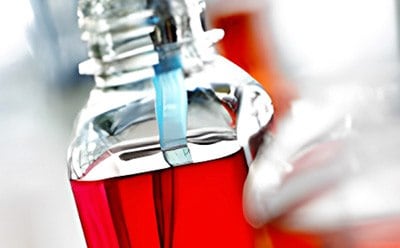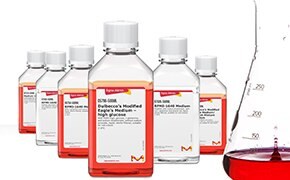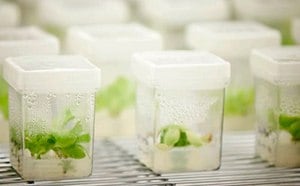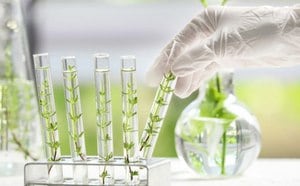Media Preparation

Cell culture media preparation significantly impacts mammalian cell growth and experimental outcomes. Similarly, there are specific media formulated to support the cultivation of microorganisms in vitro. Culture media provide a source of energy for cell growth and compounds that regulate cellular processes. Both prokaryotic and eukaryotic cultures may have specific growth requirements. Media selection depends on the culture type, purpose of cultivation, and cell density requirements.
Featured Categories
Choose from a range of optimized cell culture media formulations, including DMEM, RPMI-1640, and serum-free options for diverse cellular needs.
Cultivate cells, organs, tissues with plant culture media like MS, B5, Phytamax™ Orchid Medium, enriched with nutrients and regulators.
Plant tissue culture reagents, including gelling agents, plant growth regulators, auxins, cytokinins, and other supplements for supporting the growth and development of plant cells and tissues in culture.
Media Preparation
Commercial culture media are provided in dehydrated or powdered form, in liquid concentrate, or as working solutions. Dehydrated media for broth cultures need to be prepared by dissolving in distilled water and adjusting the final pH prior to sterilization. Powdered media for agar cultures must be dissolved in distilled water, stirred, then boiled or autoclaved prior to pouring into sterile petri dishes using aseptic techniques. Culture media provided as liquid concentrates must be aseptically diluted in distilled water, adjusted for pH, and dispensed into sterile containers for storage. Culture media provided as working solutions are ready to use after the addition of any required serum or other supplements under sterile filtration and/or aseptic conditions, and warming to the appropriate temperature for cell growth.
Culture Media Sterilization
Culture media prepared from powders must be sterilized by filtration, heating, or autoclaving prior to use. Although liquid media are often supplied sterile and at ready-to-use concentration, sterile filtration is recommended, particularly if sera or other supplements are to be added before use. Following sterilization, aseptic techniques should be used when handling culture media to prevent cross-contamination or the growth of unwanted microorganisms.
Culture Media Supplements
Certain supplements required for cell cultivation or regulation are unstable or heat-labile; therefore, they must be added by the user to heat-sterilized basal culture medium prior to use. Serum typically derived from bovine sources (FBS) is a common supplement used in animal cell culture media. Hormones, growth factors, and specific signaling molecules may be required for the growth of certain cell types. Additives such as IPTG are used to induce protein expression. Antibiotics may also be added to culture media to control the growth of bacterial and fungal contaminants, though contamination can be well-controlled with appropriate handling and storage of media.
Culture Media Storage and Usage
Commercial and prepared culture media in liquid form, poured agar form, or working solutions are typically stored at 4 °C in the dark to suppress the growth of opportunistic microorganisms and to prevent light-induced degradation of culture media components. Prior to inoculation with cultures, media should be warmed to an appropriate temperature for cell growth.
Visit our document search for data sheets, certificates and technical documentation.
Related Articles
- This is a cell culture cross-reference chart to find our cell culture products, inclusing Corning Cellgro's cell culture products and DPBS.
- Cross reference tool for identifying tissue culture media. Discover direct replacements for Gibco® and Lonza/BioWhittaker® cell culture products and reagents.
- Find direct replacements for Gibco by Life Technologies media or Invitrogen cell culture products. All Gibco media equivalents such as FBS, EMEM (Eagle), PBS, and trypsin include a CoA.
- Serum cross reference tables allow you to find our products to replace sera from Invitrogen/Gibco, Hycolne, Mediatech, Biowhittaker, Biomeda, and Fisher.
- Learn about bovine serum albumin (BSA) structure, molecular weight, function, solubility, how BSA is made, purification methods, applications and purchasing.
- See All (31)
Related Protocols
- Protect your investment with best practices for storing and thawing FBS and other sera. Sample FBS for validation in your cell culture protocol.
- Plant tissue culture media are generally sterilized by autoclaving at 121 °C and 1.05 kg/cm2 (15-20 psi). The time required for sterilization depends upon the volume of medium in the vessel.
- Protocol for charcoal stripping fetal bovine serum for hormonal depletion, with and without heat inactivation.
- See All (2)
Find More Articles and Protocols
How Can We Help
In case of any questions, please submit a customer support request
or talk to our customer service team:
Email custserv@sial.com
or call +1 (800) 244-1173
Additional Support
- Chromatogram Search
Use the Chromatogram Search to identify unknown compounds in your sample.
- Calculators & Apps
Web Toolbox - science research tools and resources for analytical chemistry, life science, chemical synthesis and materials science.
- Customer Support Request
Customer support including help with orders, products, accounts, and website technical issues.
- FAQ
Explore our Frequently Asked Questions for answers to commonly asked questions about our products and services.
To continue reading please sign in or create an account.
Don't Have An Account?


